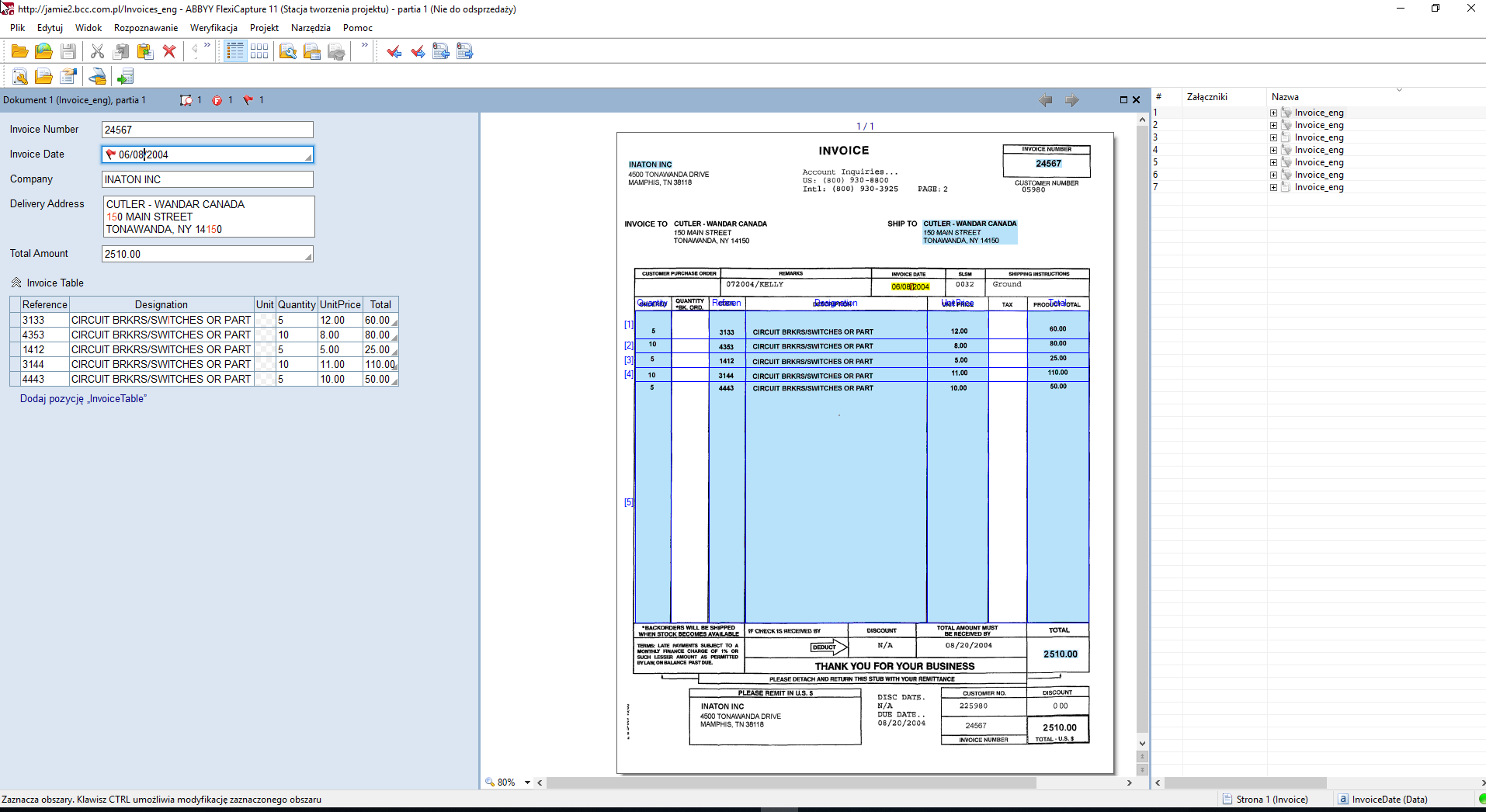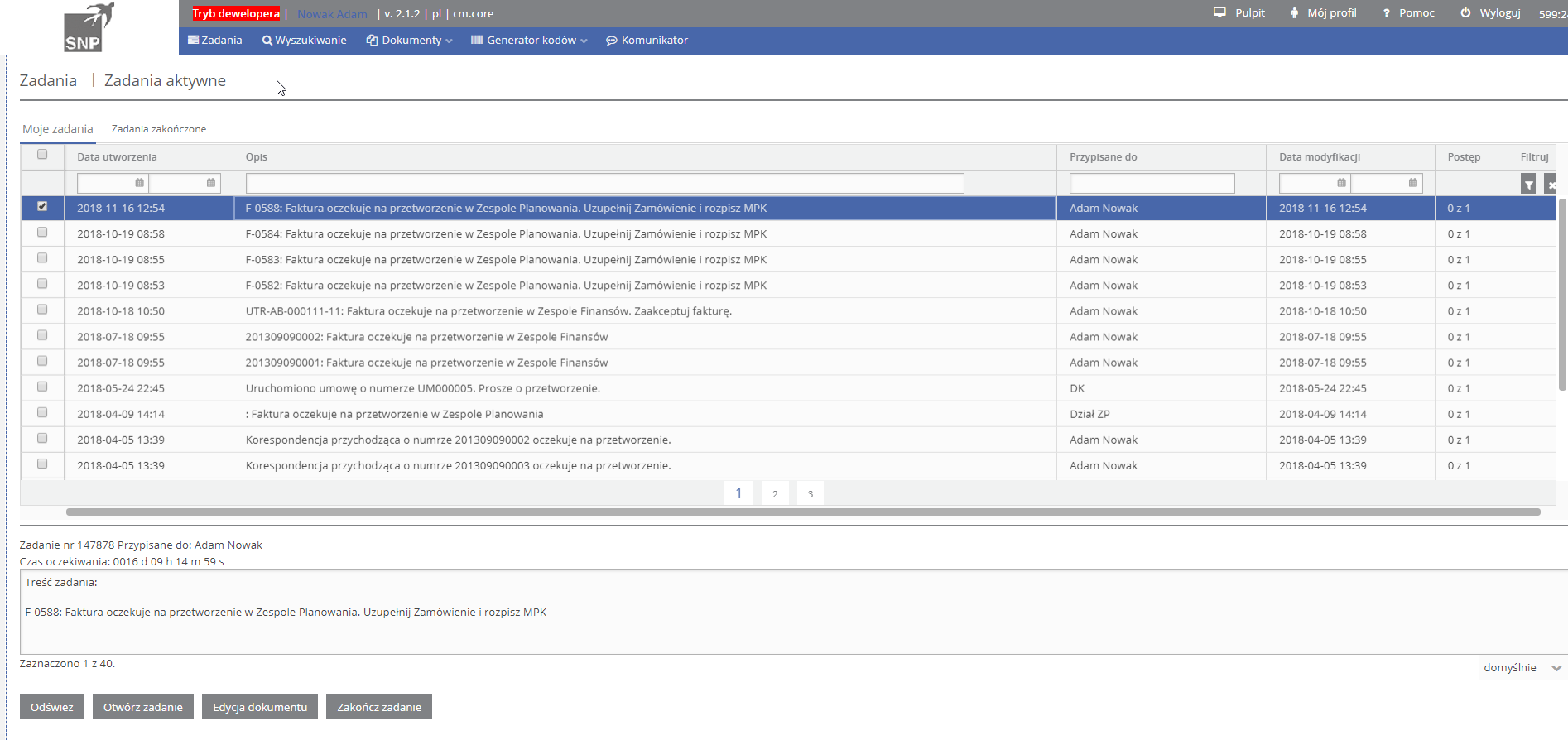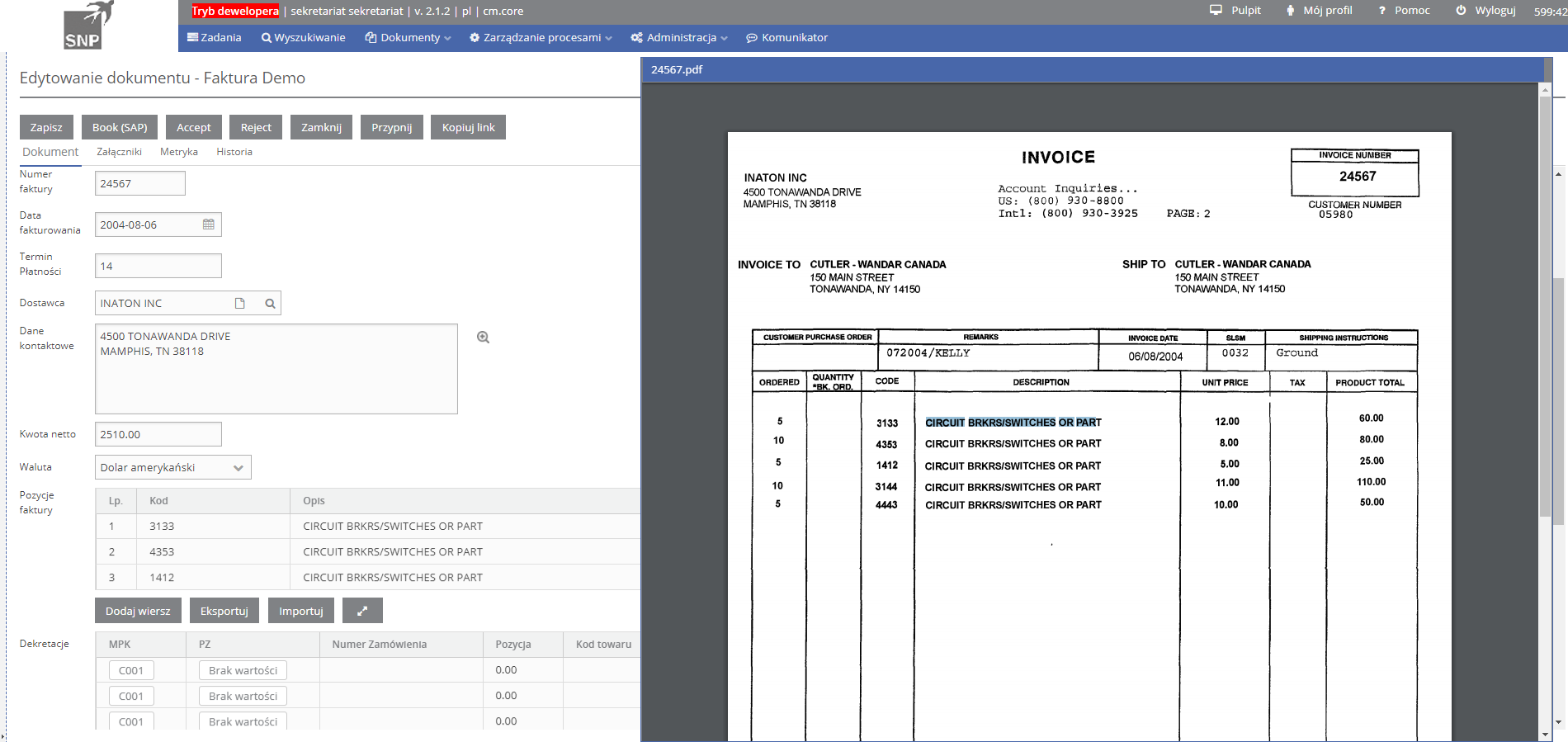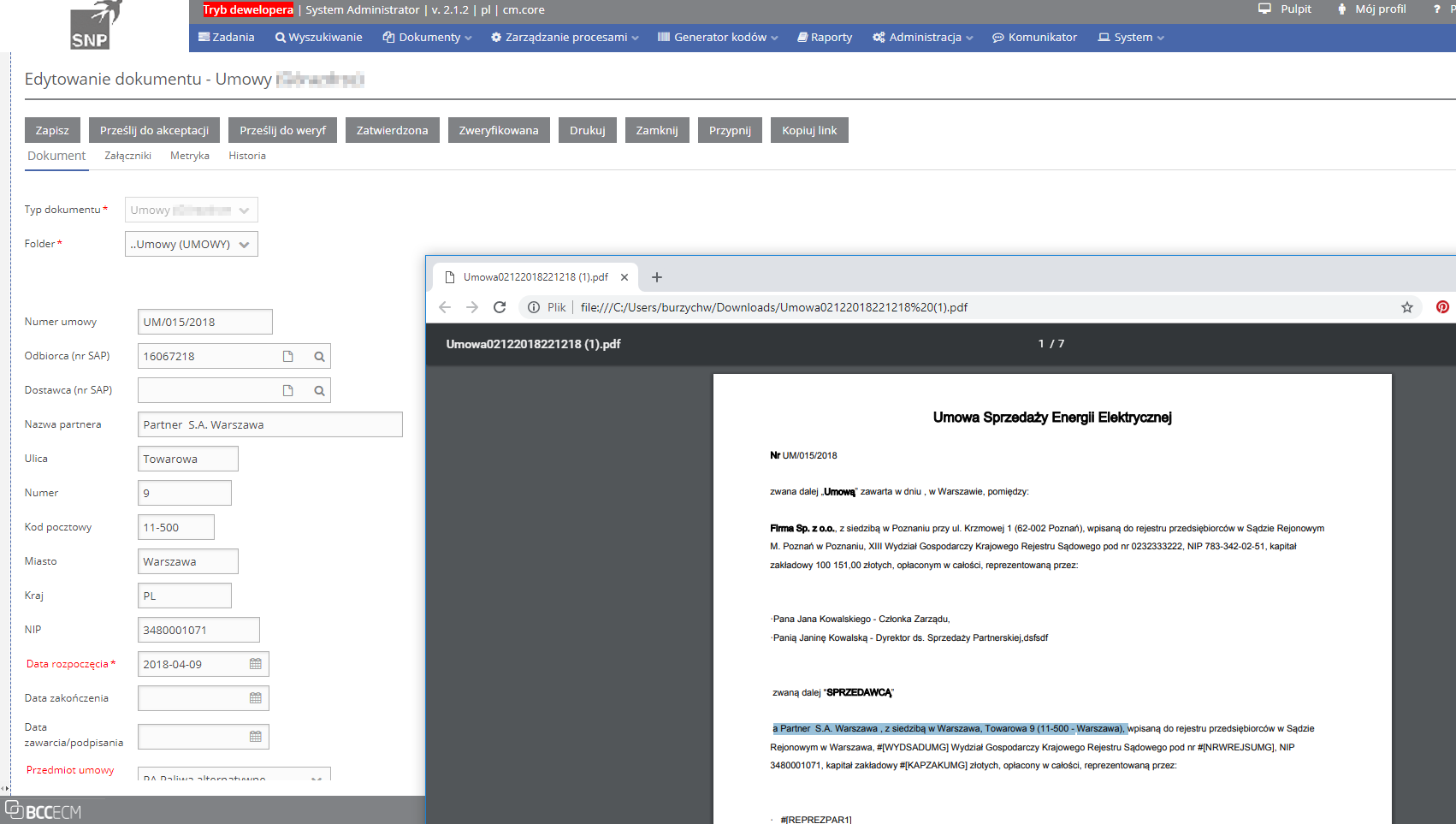In every large company we deal with multiple business processes. Some of them are well known and described in detail in internal regulations, others are known only to people who perform the duties associated with them on a daily basis. Often, employees of different departments are not aware of how matters are processed in other departments, where these processes overlap, permeate and communicate. When preparing a company to implement an Enterprise Content Management (currently Rockawork) solution in order to automate processes, it is worth taking the time to identify all processes in the company and try to document them on a unit level, as well as to build a process map on which you can clearly see how these processes interact with each other. Awareness of employees, especially process leaders, is the key to successful implementation of such a solution.
To dispel concerns
Often there is a concern among the company’s employees – since the system will automatically process matters that have required my involvement and knowledge so far, my position will probably become redundant. Nothing could be further from the truth. The process will continue to require interaction of the same employees, but in a more organized way. Automation may involve manual steps which, for example, require the creation of a labor-intensive report or the preparation of a preliminary version of a document from a template, but it is still only a tool in the hands of the same people, who will now be able to look at their work from a different perspective.
The automation of processes brings many benefits. The first dimension that we associate with this is the time dimension – we expect matters to be dealt with faster. This is not necessarily the case, although often routine tasks or laborious reports can be automated by technology. An underestimated aspect of ECM implementation is the employees’ awareness of how complex our business is and how many actors there are in these processes. ECM and automation of processes creates a new approach to work – people who have been performing a portion of tasks in a given process so far, have a chance to get involved in its improvement and become its engineers.
Calculate the costs of not having ECM
The costs of printing, copying and storing paper documents, archiving and accessing documents are expressed not only in money. There are also other aspects, e.g. time spent on finding them, dissatisfaction of customers due to difficulties in obtaining information about their matters, dissatisfaction of employees or missed opportunities due to the inability to make a quick decision. Not to mention the costs of duplicated, dispersed, hard-to-access information that unnecessarily occupies space in various IT systems. And on top of that, there are costs of risk, control, ensuring compliance with internal and external regulations, access and rights to documents, often confidential ones.
The key to the success of the ECM system implementation will be the identification of roles in the organization and their responsibility for individual stages of the processes. It is worthwhile to involve all key employees in the analysis, as they have the knowledge of how our organization operates today. Their knowledge is needed to define both a map of data flow in the process, to observe and define steps, and also to define key process parameters that they will enable them to observe how efficient or inefficient this process is in the future, to identify the weaknesses and bottlenecks of these processes and to figure out how these places can be unblocked by controlling business rules.
What areas are we talking about?
There are processes specific to a given department of the company, processes that run across the organization, and global processes that affect all employees or are required by law. We can also divide them into:
- strictly related to core business, i.e. core business processes,
- supporting processes running in the background (back-office processes).
Examples of processes from the first group include sales processes (related to the handling and flow of inquiries, offers, orders for products or services), as well as processes related to handling incoming correspondence, or concerning project management and any related documentation.
In the area of back-office processes, the most frequent need is to control the flow of cost invoices, contracts with suppliers, travel expense accounting, handling of leave requests or other HR requests. Of course, these processes can be, and most often are, interrelated. The most typical and common example is the purchase-to-pay process, i.e. a purchasing process related to order processing (optionally, preceded by the demand process along with the analysis of offers sent by suppliers), the management of the cost invoice flow and submission for payment. Most often, this process also consists of activities related to the handling and flow of a contract with a counterparty along with the secure archiving of all documents that are processed in this process.
Let’s look in detail at what is changed by the implementation of the ECM system in the organization – using as an example several scenarios from various areas of the company, supported by the Rockawork solution.
Scenario 1: Approval of purchase invoices
The process of approval of purchase invoices includes several stages: recording of an invoice document, description and approval of the content, description and financial approval, posting of the invoice. Each of these stages has a different scope of activities to be performed and a different scope of information to be processed.
Document recording – invoices can arrive at the organization in physical and electronic form. In the case of the former, the invoice should be digitized, i.e. scanned. Scanning usually starts the document flow in an electronic system. In most cases, the first details about the invoice are entered into the application: supplier, dates, amounts, initial description, etc. In the case of a very large number of documents, the input of data can be facilitated by the so-called “intelligent" OCR, which learns different invoice formats from suppliers and in this way greatly improves the reading of invoice data.

A sample invoice and its attributes read by the “Intelligent" OCR system
In the case of the electronic form of a document, where the invoice is, for example, a pdf file, in most cases, it is sent to the organization by e-mail. In such cases, the system can monitor the mailbox and automatically retrieve documents and start their flow
Description and approval of the content – this step is usually performed by the person responsible for ordering goods or services. Having access to objects from the ERP system (e.g. SAP), the ECM system allows you to allocate costs by selecting objects from the dictionary (Cost Center, Orders, Goods Receipts, Contracts – depending on the invoice type). The system automatically synchronizes data between ERP and ECM – it is unnoticeable to users.

ECM systems generate tasks assigned to persons or groups of persons. Tasks have a detailed description of activities required to complete a task and to forward it to the next person in the workflow.
Description and financial approval – a stage executed by the finance department. In this step, other information about the invoice that is needed for automatic posting is provided. All dates (invoices, bases), dictionary fields must correspond one-to-one to those used in SAP or another ERP system in order to ensure that the document is processed without error.

ECM stores both the data and the documents themselves – in this case, a scan of the invoice and its account assignment data collected during the description process were displayed.
Invoice posting – posting is also done by the finance department. It is carried out automatically in SAP ERP (SAP S/4HANA or other ERP system). All the data required to post the document in ERP has already been provided in ECM. The financial document is sent and linked to the scan in ECM instantly.
Scenario 2: HR documentation management
The employee’s e-File is a classic application of ECM systems in the HR area. The automation of HR processes proves to be effective in onboarding and outboarding processes, where documents are generated from templates. There are usually a lot of them – from the contract itself, various types of circulation sheets, access requests, or requests for tools. There is room for improvement where an organization can control the process of generating documents. Let’s imagine that in the corner of the document we place a barcode with a coded employee number and document type. When scanned documents of an employee are being stored, this barcode could enable the system to automatically place them in the appropriate folder of the employee, in the appropriate section A, B, C in the employee’s file.
Another way to automate HR processes can be the generation of requests for access to IT systems, requests for work clothes, preparation of work tools and other numerous activities that managers have to perform when a new employee appears in their department.
Scenario 3: Documentation of the offer preparation and selling process
The same idea as the employee e-file can be copied for the purposes of cooperation with counterparties. Any correspondence sent to the counterparty or a letter from the customer, e.g. informing about a change in master data, can be stored in the customer’s e-file.
Offer preparation and sales processes are accompanied by many documents – from correspondence through responses to inquiries to contract negotiations. ECM systems are often equipped with contract and offer generators. With access to SAP SD pricing modules, they can significantly accelerate and standardize the generation and archiving of these documents. The customer’s e-file can be a buckle that joins all master data and processes related to customer service. ECM will not replace CRM systems – it is not designed for this purpose, but where a large number of documents from the customer, contracts and offers are processed – automation of these processes brings real improvements, and ECM will fulfil its role.

Documents in ECM can be generated automatically on the basis of data from the form. It is a convenient way to automate the time-consuming process of editing and entering data in a document.
All for One ECM (currently Rockawork): content management and workflow in one
Rockawork is a unique combination of a content management system (management and archiving of all types of electronic information produced and processed by an organization) and a workflow system on a single system platform; in ECM, you can thus manage not only incoming and outgoing electronic documents, but also the processes that are carried out in the context of these documents. Advanced functionalities and large expansion possibilities form the basis for building one coherent enterprise information management system, the same for all departments.
Rockawork has a unique architecture based on the so-called logical systems, enabling the separation of data that due to its business significance must be stored using secure management mechanisms. It is used in document and process management in corporate groups or e.g. in a situation where documents are made available to external entities (e.g. customers, business partners) and are simultaneously involved in workflow processes.
Unconstrained configuration
The Rockawork solution is designed for organizations that want to securely and freely manage documents. This includes electronic archiving and flow of all types of documents (workflow).
Rockawork has been prepared with the strategic idea of acting as a customer-managed platform rather than standard software that in the long run may require high expenditures and organizational efforts in the processes of application change management. This is why ECM focuses on business configuration and administration rather than on the rapid availability of standard features and subsequent higher development costs.
Rockawork enables you to carry out configuration (of documents, system fields, user roles, workflows, etc.) yourself to tailor the final solution to the company’s needs, i.e. defining virtual documents, access and permissions management, process modeling, change management, etc. The development of the system, new processes, archival virtual documents or configuration change management do not require any involvement of SNP (now All for One Poland) and can be carried out by the customer’s employees on their own.
Secure and compliant with standards
Rockawork is available as a SaaS service based on a private cloud in a data center managed by SNP and not by a third party. This significantly minimizes the business risk of the companies using the solution, enabling the compliance with very rigorous SLA timeframes. The SNP data center has a certified integrated quality, information security and IT service management system based on ISO 27001 and ISO 20000.
As the only ECM tool in Poland, Rockawork has a certified set of additional ISO 27018 requirements, dedicated to cloud solutions. For ECM customers, this means the highest level of cloud application security management, including proactive application monitoring, regular security tests, the highest possible performance and compliance with the GDPR.
Web-enabled platform
Rockawork is fully accessible via a web browser – it does not require any applications/add-ons to be installed on the user’s side on the workstation. By standardizing the way of working across the entire organization, it minimizes time and money spent on the onboarding of new employees (it does not require advanced training in the use of applications). In the standard version, it offers the so-called multilingualism; this function enables you to work with the same document in a workflow process in many languages.
Integration with various platforms
Rockawork is a system that allows for expansion by integrating with various external systems. The use of Webservice enables ECM to be integrated with systems based on Microsoft, Java technologies or other services, e.g. on the Internet. ECM can call WebService during routine administrative tasks (e.g. called once a day, once a month, etc.), or in automatic process steps. It is a great convenience and one of the biggest advantages of this solution, enabling real automation of tedious steps, reduction of mistakes and retrieving data from many databases available in the organization.
ECM can connect to many systems at once, e.g. in order to download the number of employees’ leave days from the HR system (e.g. SAP HR, SuccessFactors or eNova) when a leave request is being set up, or to download a list of controlling objects, orders, counterparty data needed to post an invoice.

